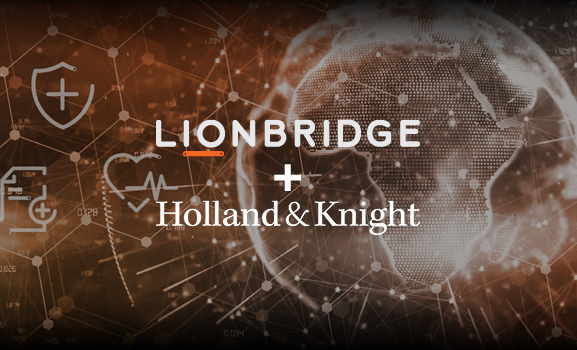- WHAT WE DO
Additional Services

- Industries

Case Study: Multilingual Retail Marketing
New AI Content Creation Solutions for a Sports and Apparel Giant

- RESOURCES

- WHO WE ARE

What We Do Home
Generative AI
- AI Translation Services
- Content Remix
AI Training
- Aurora AI Studio™
Machine Translation
- MT Tracker
Instant Interpreter
Smart Onboarding
Translation Service Models
Content Services
- Technical Writing
- Training & eLearning
- Financial Reports
- Digital Marketing
- SEO & Content Optimization
Translation Services
- Video Localization
- Software Localization
- Website Localization
- Translation for Regulated Companies
- Interpretation
- Instant Interpreter
- Live Events
- Language Quality Services
Testing Services
- Functional QA & Testing
- Compatibility Testing
- Interoperability Testing
- Performance Testing
- Accessibility Testing
- UX/CX Testing
Industries Home
Life Sciences Translations
- Pharmaceutical Translations
- Clinical Trial Translations
- Regulatory Translations
- Post-Approval Translations
- Corporate Pharma Translations
- Medical Device Language Services
- Validation and Clinical
- Regulatory Translations
- Post-Authorization Translations
- Corporate Medical Device Translations
Banking & Finance
Retail
Luxury
E-Commerce
Games
Automotive
Consumer Packaged Goods
Technology
Industrial Manufacturing
Legal Services
Travel & Hospitality
Insights
- Blog Posts
- Case Studies
- Whitepapers
- Solution Briefs
- Infographics
- eBooks
- Videos
Webinars
Lionbridge Knowledge Hubs
- Positive Patient Outcomes
- Modern Clinical Trial Solutions
- Patient Engagement
- AI Thought Leadership
SELECT LANGUAGE:
Machine Translation (MT) research is more than 70 years old. However, the technology became mainstream only after tech companies started offering MT services on the internet. Over the years, MT has significantly improved, opening unprecedented opportunities for companies to further connect with customers worldwide and enhance their internal communications with global employees.
Lionbridge’s Smart MT solution enables customers to use best-in-class MT for the entire customer experience.
What Are the Machine Translation Types?
Statistical Machine Translation (SMT) and Neural Machine Translation (NMT) are the most common types of MT. Statistical Machine Translation relies on statistical models and large amounts of language data to predict the best translation. Neural Machine Translation also leverages large amounts of language data, but it uses different types of neural network models to render MT. Neural Machine Translation typically generates better results than Statistical Machine Translation, which has been largely phased out in favor of NMT.
The best translation results are usually produced when MT output is reviewed and refined. While humans have traditionally performed post-editing work, generative AI (GenAI) / Large Language Models (LLMs) can review and improve Machine Translation (MT) output and identify text that requires further review by a human. Read our blog to learn more about LLM-assisted post-editing and how Lionbridge’s offering is part of a comprehensive translation solution orchestrated by the Lionbridge Aurora AI™ content management platform.
Just getting acclimated to MT and its terminology? Then, look at our cheat sheet to familiarize yourself with some of the most common terms.
What Strategies Are Used To Implement Machine Translation?
Companies can incorporate MT into their content lifecycle in a variety of ways. They typically use one of the following strategies:
Free MT services — This approach involves the utilization of free services from companies like Google Translate or Bing Translator. These services enable organizations to get quick translations for a small amount of content. The customer will get the gist of what the content means. However, this approach comes with a risk. In exchange for providing free services, the company uses all the content it receives to train its engines. This is not an ideal option for companies that want privacy and data security.
Cloud MT — This offering involves cloud services by large technology companies. It is a good choice for companies that require large scale deployments and who have in-house computational scientists or MT specialists who can train MT engines.
Best-of-breed MT — This service relies on integration. It incorporates multiple MT engines from different tech companies into one platform. It allows the user to select the best option based on content type or language pair. This is the most flexible deployment strategy that increases MT quality and reduces MT costs. Learn more about Lionbridge’s best-of-breed Smart MT offering and how glossaries for Machine Translation used in Smart MT bolster quality.
On-premises MT — This strategy puts the MT technology on the premises of the company using it. This is a convenient solution for organizations that want complete control of the data going into the MT engines. To execute this type of MT, companies need to set up an in-house MT server, manage it, and train it. This is the costliest deployment strategy since it requires technology and R&D teams to manage it.

Is Machine Translation Still Relevant Amid an AI World?
Even as AI proliferates, GenAI cannot match top MT engines' translation speed and affordability. Moreover, MT engines outperform LLMs in translation quality at the time of this writing. Visit the Lionbridge Machine Translation Tracker page for comparisons.
AI’s shortcomings firmly root MT’s place in the translation workflow—at least for now.
—MT is best for initial translations at the beginning of the process.
—LLMs are best for post-editing and quality assurance tasks for overall quality enhancements.
Combining MT and LLM technologies with human oversight enables enterprises to achieve desired translation results.
What Are the Best Uses for Machine Translation?
There are a variety of ways to apply MT. You can use the technology to translate your website or other product-related collateral. You can communicate with people inside and outside of your company without hiring native speakers. The technology can be used to staff help desks to better serve customers in more markets. It can increase office productivity by enabling employees to translate internal documents. Use MT in the following ways:
- Localization — Effortlessly translate large amounts of product, marketing, or user-generated content into many languages. By making MT part of your content journey and integrating it into your content workflows, you’ll achieve greater transactional efficiency. While human translators excel in quality, MT achieves unsurpassed cost-effectiveness. Today’s MT renders much better and more accurate translation quality than in the past, increasing its usefulness for more types of documents and texts.
- Customer support — Augment your support teams in ticketing and real-time chat systems to handle more customer interactions in more languages. Look for a solution that integrates with leading ticketing and chat systems. Localization must happen in real time as the content is created. This greatly enhances the customer experience and enables companies to build strong customer relationships.
- Office productivity — Enable your global employees to interact with content in languages they may not understand. But beware of free MT solutions that have the potential to put your company data, security, and privacy at risk. Companies can eliminate these risks by choosing to use a Machine Translation as a Service (MTaaS) solution. Lionbridge’s Smart MT solution enables companies to use MT in a secure manner and achieve brand voice consistency for all translated content.

Why Are Companies Implementing Machine Translation?
MT enables companies to handle a growing amount of content and increase communications across digital channels. It helps them scale the dissemination of their content in both existing and new markets despite fixed marketing and localization budgets. MT enables companies to compete effectively.
Extensive research indicates that users are even willing to accept less-than-perfect quality output.
A survey of 8,709 consumers in 29 countries found:
- 65% of buyers prefer to purchase a product when content is in their local language, even if that content contains some errors
- 66% of users turn to online MT when evaluating products available in other languages
- 40% of consumers will not buy products that are presented in other languages
(Source: “Can’t Read, Won’t Buy – B2C,” CSA Research, June 2020)
By making MT part of the content lifecycle, companies can improve the experiences of non-native audiences. When MT is executed properly, it enables companies to achieve a consistent brand voice across languages and different content types. There is a caveat. It is not possible to achieve a consistent brand voice when using free MT services. This approach can, indeed, result in poor customer experiences because these free services frequently deliver average or poor-quality translations.
MT’s cost savings, processing speed, and ability to handle large volumes of content effortlessly present extraordinary opportunities for companies to grow their presence in multiple markets cost-effectively.
Get in touch
Interested in learning how to put Smart MT and LLMs to work for you? Reach out to us.
Note: This blog updates a post that originally appeared in 2022.
Fill out our contact form to start a conversation with us.
We’re eager to understand your needs and share how our innovative capabilities can empower you to break barriers and expand your global reach. Ready to explore the possibilities? We can’t wait to help.



